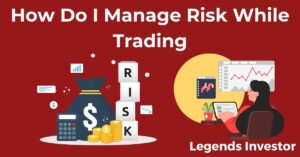Introduction to Stock Trading for Beginners
Welcome to the world of stock trading! If you’re a beginner, the stock market might seem like a complex and intimidating place. However, with the right knowledge and approach, stock trading can become a powerful tool for growing your wealth. This guide will help you understand the basics, set up your trading account, and make your first trade. Let’s dive in.
Understanding What Stock Trading Entails
Definition of Stock Trading
Stock trading involves buying and selling shares of publicly traded companies. When you purchase a stock, you own a piece of that company. The value of your shares can rise or fall based on the company’s performance and market conditions.
Basic Concepts and Terminology
- Shares: Units of ownership in a company.
- Stock Exchange: A marketplace where stocks are bought and sold (e.g., NYSE, NASDAQ).
- Bull Market: A market condition where stock prices are rising.
- Bear Market: A market condition where stock prices are falling.
Importance of Stock Trading in Personal Finance
Stock trading can be an effective way to build wealth over time. By investing in stocks, you can benefit from the growth of companies and earn returns through capital appreciation and dividends.
Defining Your Financial Goals and Investment Timeline
Short-term vs. Long-term Goals
Your financial goals will dictate your trading strategy. Short-term goals might include saving for a vacation or a down payment on a house, while long-term goals could be retirement or funding a child’s education.
How Your Goals Influence Your Trading Strategy
Short-term traders often seek quick profits and might engage in day trading or swing trading. Long-term investors focus on the growth potential of stocks over years or decades.
Importance of Having a Clear Investment Timeline
A clear timeline helps you choose the right stocks and trading strategies. Long-term investments typically involve lower risk and volatility compared to short-term trading.
Addressing the Risks and Potential Rewards
Common Risks in Stock Trading
- Market Risk: The possibility of losing money due to market fluctuations.
- Company Risk: The risk associated with a specific company’s performance.
- Liquidity Risk: The risk that you may not be able to sell your stock quickly without affecting its price.
Potential Rewards and Returns
Investing in stocks can yield significant returns through capital gains and dividends. Historically, the stock market has provided higher returns compared to other investment options like bonds or savings accounts.
Balancing Risk and Reward in Your Investment Strategy
Diversifying your investments and setting stop-loss orders can help manage risk. It’s important to find a balance that aligns with your risk tolerance and financial goals.
Educate Yourself: Building a Strong Foundation
Importance of Financial Literacy
Understanding financial concepts and market dynamics is crucial for successful trading. A strong foundation will help you make informed decisions and avoid common pitfalls.
Recommended Resources: Books, Courses, and Seminars
- Books: “The Intelligent Investor” by Benjamin Graham, “A Random Walk Down Wall Street” by Burton G. Malkiel.
- Online Courses: Coursera, Udemy, and Investopedia Academy offer comprehensive courses on stock trading.
- Seminars and Webinars: Many financial institutions and brokers offer educational seminars and webinars.
Staying Up-to-date with Market News and Trends
Regularly reading financial news, subscribing to market analysis newsletters, and following market experts on social media can keep you informed about the latest trends and developments.
Setting Up Your Trading Account
Choosing the Right Brokerage
Select a brokerage that aligns with your trading needs and goals. Consider factors such as fees, trading platforms, research tools, and customer service.
The Process of Opening a Trading Account
- Research Brokers: Compare different brokers and choose one that suits your needs.
- Complete the Application: Provide your personal information, financial details, and identification.
- Fund Your Account: Transfer money into your trading account to start trading.
Understanding Brokerage Fees and Other Costs
Be aware of fees such as commission fees, account maintenance fees, and transfer fees. These costs can impact your overall returns, so choose a broker with competitive pricing.
Planning Your Investment Strategy
Different Stock Trading Strategies for Different Goals
- Day Trading: Buying and selling stocks within the same day.
- Swing Trading: Holding stocks for several days or weeks to capitalize on short-term price movements.
- Value Investing: Buying undervalued stocks and holding them long-term.
The Role of Diversification in Risk Management
Diversifying your portfolio across different sectors and asset classes can reduce risk. By not putting all your money into one stock, you can mitigate the impact of poor performance by any single investment.
Creating a Balanced and Informed Portfolio
Build a portfolio that reflects your risk tolerance and investment goals. Balance high-risk, high-reward stocks with more stable, lower-risk investments.
Making the First Trade: A Step-by-Step Guide
Researching and Selecting Your First Stocks
Start by researching companies and understanding their financial health, growth prospects, and market position. Look for companies with a strong track record and positive future outlook.
How to Place a Trade: Market Orders, Limit Orders, and More
- Market Order: Buy or sell a stock immediately at the current market price.
- Limit Order: Buy or sell a stock at a specific price or better.
- Stop-Loss Order: Sell a stock when it reaches a certain price to limit losses.
Reviewing and Learning from Your First Trade Experience
After making your first trade, review the outcome and learn from the experience. Analyze what went well and what could be improved for future trades.
Risk Management in Stock Trading
Setting Stop-Loss Orders to Protect Investments
Stop-loss orders automatically sell your stock when it reaches a certain price, protecting you from significant losses.
The Importance of Not Overinvesting
Avoid putting too much money into a single stock. Overinvesting can lead to substantial losses if the stock performs poorly.
Regularly Assessing and Adapting Your Strategy
Regularly review your portfolio and adjust your strategy as needed. Stay flexible and be prepared to adapt to changing market conditions.
Analyzing and Understanding Market Trends
Technical Analysis vs Fundamental Analysis
- Technical Analysis: Analyzing stock price charts and using indicators to predict future price movements.
- Fundamental Analysis: Evaluating a company’s financial statements, management, and competitive position to determine its value.
Using Indicators and Economic Events to Predict Stock Trends
Indicators such as moving averages, relative strength index (RSI), and economic events like interest rate changes can provide insights into market trends.
The Significance of Earnings Reports and Other Public Company Information
Earnings reports and public disclosures provide valuable information about a company’s performance and future prospects. Stay informed about these releases to make better trading decisions.
Adapting to Changes: Importance of Flexibility
Staying Prepared for Market Volatility
Stock markets can be volatile. Stay prepared by having a flexible strategy and being ready to adjust your positions when needed.
Adopting New Strategies When Circumstances Change
Market conditions can change rapidly. Be open to adopting new strategies and learning new techniques to stay ahead.
Lifelong Learning as a Stock Trader
The stock market is constantly evolving. Commit to lifelong learning to stay informed about new developments and improve your trading skills.
Going Further: Advanced Trading Concepts
Exploring Options, Futures, and Other Financial Instruments
As you gain experience, consider exploring advanced trading instruments like options and futures to diversify your strategies.
Algorithmic Trading and the Use of Technology
Algorithmic trading involves using computer algorithms to execute trades. This can enhance efficiency and allow for more complex strategies.
Joining a Community of Traders for Support and Continued Education
Joining online forums, attending trader meetups, and participating in trading communities can provide valuable support and insights.
Conclusion: Embarking on Your Trading Journey
Stock trading offers a path to financial growth and independence, but it requires knowledge, discipline, and continuous learning. Start by building a strong foundation, setting clear goals, and staying informed. Remember, balance risk with potential reward, and don’t hesitate to seek professional advice when needed. Your journey as a stock trader is just beginning—embrace the learning process and strive for continuous improvement.
By following these guidelines, you can build a solid foundation for successful stock trading. Happy trading!



